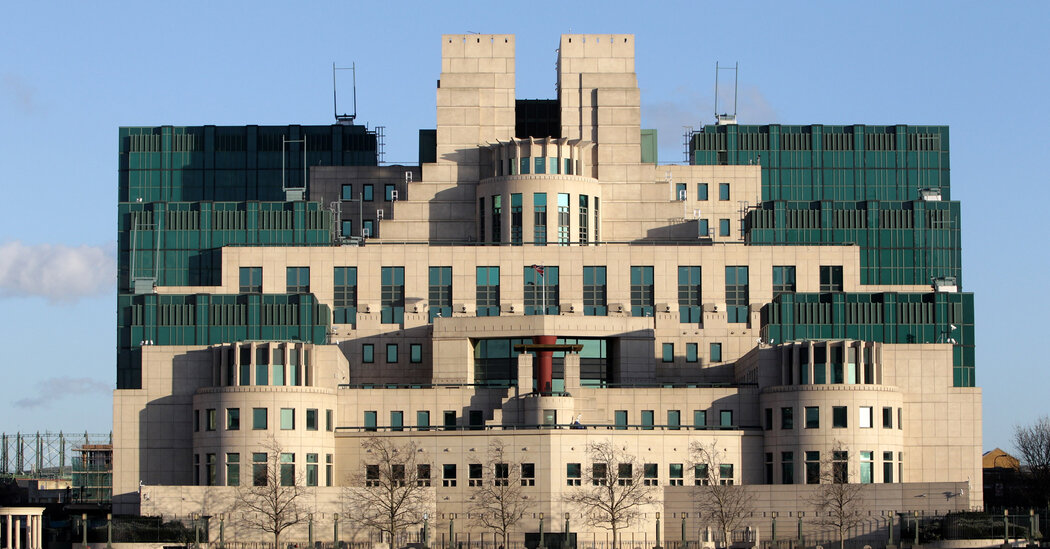Copyright The New York Times

Terry Farrell, a British architect and urban designer whose work encompassed the extremes of late 20th-century building styles, swinging from Modernist austerity to postmodernist cheek before landing somewhere in between, died on Sept. 28. He was 87. His death was announced by Farrells, the company he founded in 1980 as the Terry Farrell Partnership. It did not say where he died or cite the cause. A working-class populist from the north of England, Mr. Farrell designed attention-getting buildings like TV-am, a broadcast center completed in 1982; it had been repurposed from a car showroom in the Camden Town neighborhood of London and decorated with giant egg-cup finials. His larger-scale urban works stretch from his hometown, Newcastle upon Tyne, with his rehabilitation of its industrial quayside in 1991, to China, where he designed the Beijing South rail station, which was completed in 2008 with 24 platforms that can serve 30,000 passengers an hour. In 2001, Mr. Farrell was knighted for his service to architecture and urban design. He had been appointed an Officer of the Order of the British Empire in 1978 and a Commander of the Order of the British Empire in 1996. Not much foreshadowed this trajectory when, in 1965, Mr. Farrell partnered with Nicholas Grimshaw, another British architect, to design stripped-down buildings that called attention to their engineering. The approach, part of an aesthetic groundswell in Britain known as high-tech Modernism, was practiced by other rising architects, including Richard Rogers, Norman Foster and Michael and Patty Hopkins. Among the works produced by the Farrell/Grimshaw Partnership was a free-standing service tower containing bathrooms for student housing in London, completed in 1967; admirers included the design visionary R. Buckminster Fuller. In 1970, the partners designed an aluminum-skinned apartment block near Regent’s Park in London and lived there with their families. Their 1976 Herman Miller factory in Bath, England, offered a flexible interior and interchangeable exterior panels inspired by the company’s modular furnishings. But Mr. Farrell grew disenchanted with high-tech Modernism — an architecture that, as the architect Colin Fournier wrote in 2011, tolerated “no contradictions, no jokes, no attempts at seduction, no symbolic references, no slang, no local dialects” — and the partnership dissolved with some bitterness in the late 1970s. Mr. Grimshaw remained true to his high-tech path and enjoyed a distinguished career. He died on Sept. 14, two weeks before Mr. Farrell’s death. After the split, Mr. Farrell rode a wave of hostility to Modernist architecture, whose chief critic at the time was Charles, Prince of Wales (now King Charles III). But rather than reviving traditional styles, as Charles would have preferred, Mr. Farrell took cues from American postmodernists like Michael Graves and the husband-and-wife team Robert Venturi and Denise Scott Brown, designing buildings that were colorful mash-ups of historical architecture. The first major project that announced his apostasy was the headquarters of TV-am, a morning television franchise. With its allusions to Japanese temples and Mesopotamian ziggurats — and its fiberglass gable ornaments that resembled oversize egg cups — the building embodied television’s kaleidoscopic diversions. Fittingly, one of the egg-cup finials turned up in a 2022 episode of the BBC’s “Antiques Roadshow,” where its value was estimated at 750 to 1,000 pounds (about $1,000 to $1,340). After TV-am came a trio of large London projects radiating exuberance: Embankment Place, an office building that floated on 18 columns above the tracks and platforms of the Charing Cross railway station (1990); Alban Gate (also known as 125 London Wall), a pair of salmon-colored towers that helped bring order to the architecturally fragmented area next to an ancient city wall (1992); and the SIS Building at Vauxhall Cross, the Machine Age-meets-Montezuma edifice that is MI6’s headquarters. As Mr. Farrell related in 2014 in the BBC4 television series “The Brits Who Built the Modern World,” he knew early on that the SIS project was intended to house a government agency, but incorrectly guessed that it would be the Department of Agriculture. This, he said, explained the line of evergreen trees on the model’s facade. The building had a recurring role in James Bond movies until it was cinematically blown up in the 2015 Bond thriller “Spectre.” On the BBC4 series, Mr. Farrell noted that a group of architects who took umbrage at his polarizing design could be heard applauding in the theater. Adding to his postmodernist credentials, Mr. Farrell worked in the late 1970s and early ’80s with Charles Jencks, a leading proponent of the movement, on Mr. Jencks’s eccentric London residence Thematic House, now known as the Cosmic House. In 2018, the building received a Grade I listing, the highest level of protection for a work of historic architecture in Britain. It was the first postwar house to be given that classification. Eventually, postmodernism, which had been associated with the gaudy economics of the Thatcher era, lost its popular appeal, and Mr. Farrell turned his sights to Asia, where he had traveled frequently. His Peak Tower, a retail-and-entertainment complex in Hong Kong that opened in 1997, was a wok-shaped building elevated on large columns. Like many of his projects, it inspired some invective, multiple metaphors and a great deal of adoration. It quickly became a symbol of the city and was featured on the back of the 20 dollar Hong Kong bank note. Some 400 feet higher than the Shard, KK100 remains the tallest building in the world designed by a British architect. To emphasize this point, a proportional sketch of Mr. Piano’s tower was displayed next to a model of KK100 at the Farrell Centre, an urban studies institute that Mr. Farrell helped establish at Newcastle University in 2023. Terence Farrell was born on May 12, 1938, in Sale, near Manchester, England, and grew up in Newcastle upon Tyne. His father, Thomas Farrell, a postal worker who joined the civil service, and his mother, Molly (Maguire) Farrell, both had Irish roots. Terence Farrell earned a degree in architecture in 1961 from Newcastle University, which was then part of Durham University. He then worked briefly for the architecture department of the London County Council, a municipal authority, where he met Mr. Grimshaw. A scholarship took Mr. Farrell to the University of Pennsylvania, where the architects Louis Kahn and Denise Scott Brown deepened his appreciation for the historical and anthropological dimensions of his field. He received a master’s degree in urban planning from Penn in 1965. Mr. Farrell’s marriages to Rosemarie Mallam, in 1960, and to Susan Aplin, in 1973, both ended in divorce. He is survived by Mei Xin Wang, a financial executive he married in 2007, as well as two children from his first marriage, three children from his second marriage, a stepson, seven grandchildren and a number of great-grandchildren.



